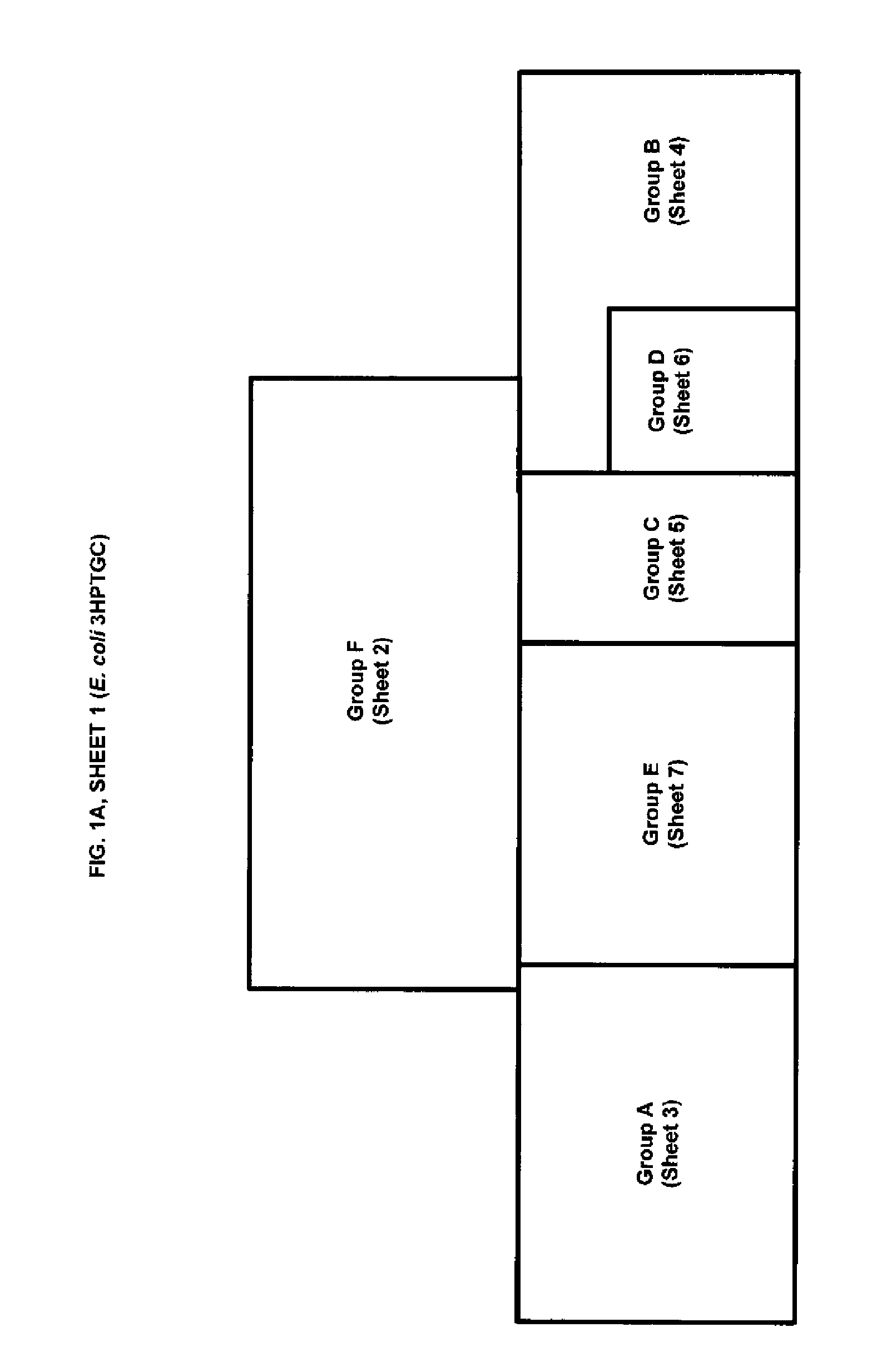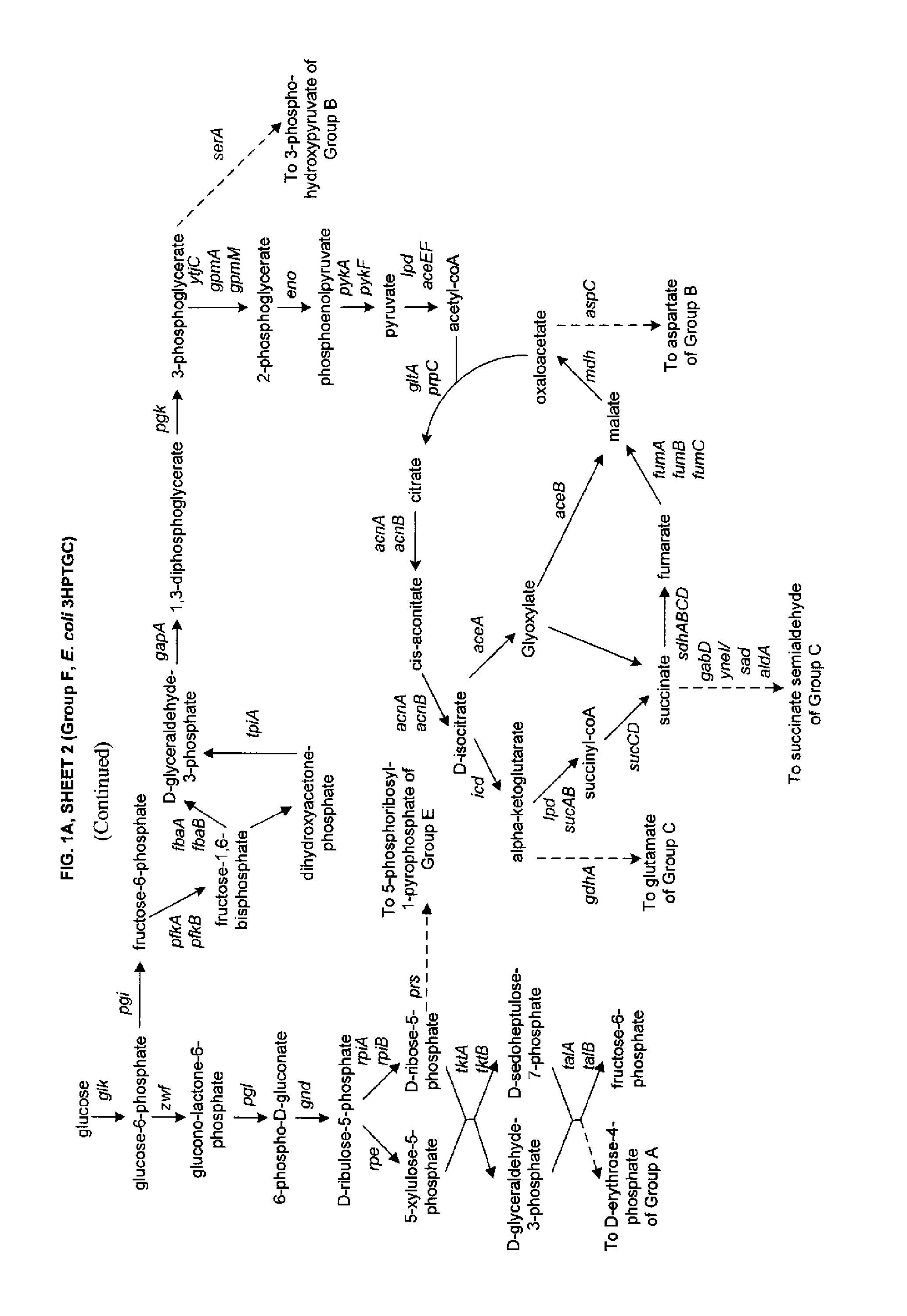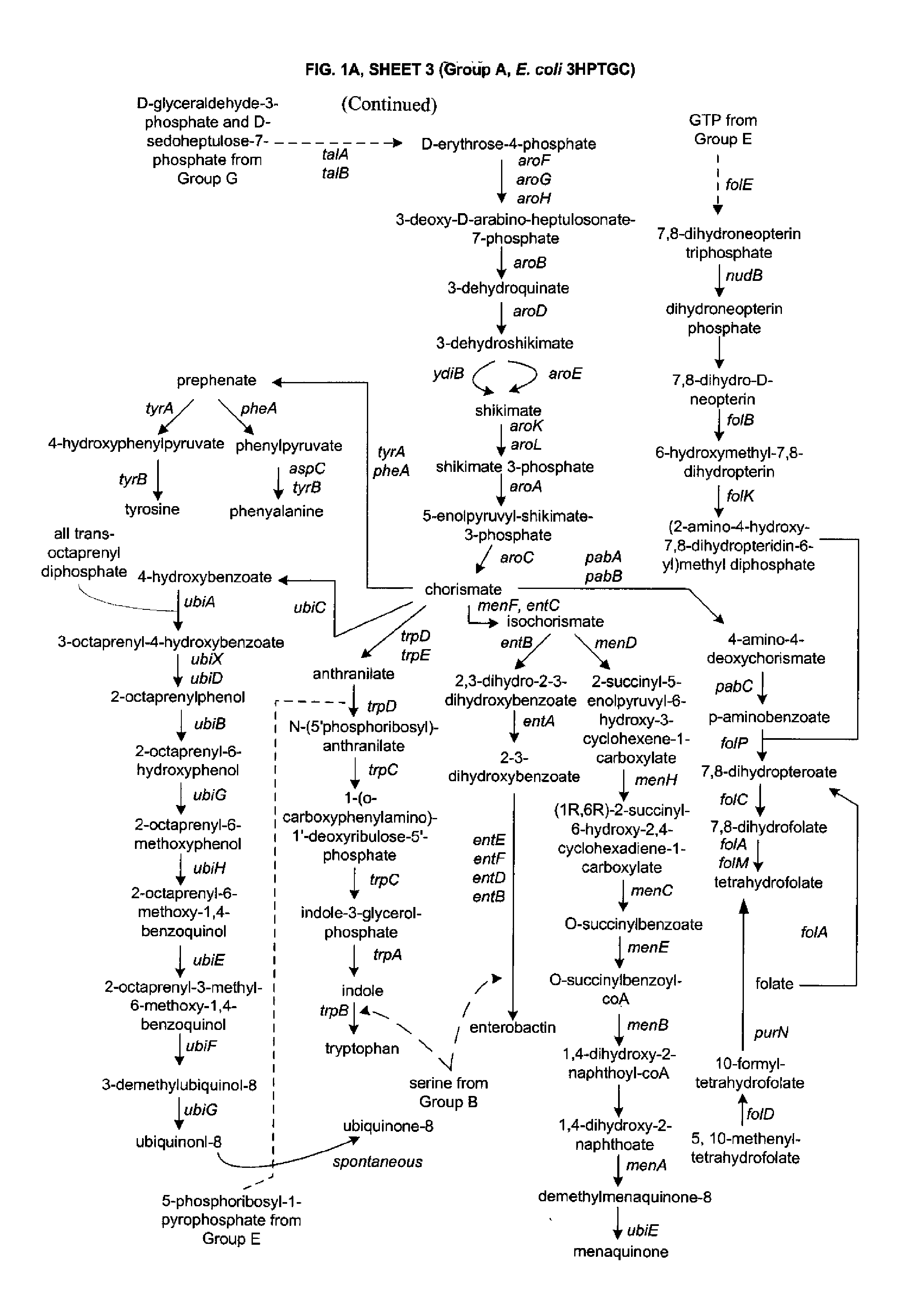Methods, systems and compositions for increased microorganism tolerance to and production of 3-hydroxypropionic acid (3-hp)
a technology of 3-hydroxypropionic acid and microorganisms, applied in the field of methods, systems and compositions for increasing the tolerance of microorganisms to and production of 3-hydroxypropionic acid, can solve the problems of cumbersome identification and inaccurateness of genes, enzymes, pathway portions and/or whole metabolic pathways that are related to a particular phenotype of interest, and achieves the improvement of 3-hp accumulation and/or production, and the effect of increasing the level of 3-
- Summary
- Abstract
- Description
- Claims
- Application Information
AI Technical Summary
Problems solved by technology
Method used
Image
Examples
example 1
Increased Copy of Genetic Elements in the 3HPTGC Confer Tolerance to 3-HP
[0196]Data from a SCALEs evaluation of library clone fitness related to 3-HP exposure, using the SCALEs technique, affords clear evidence of the relevance as to 3-HP tolerance of a number of genes and enzymes. From this data, and in view of fitness data from other portions of the 3HPTGC, a broad view may be obtained that appropriate modifications of any of the genes or enzymes of the 3HPTGC and / or provision of nucleic acid sequences that provide an enzyme activity of such enzymes (without necessarily encoding the entire enzyme) may result in an altered enzymatic activity that leads to increased 3-HP tolerance.
[0197]The method used to measure 3-HP tolerance conferred by genes in the 3HPTGC is summarized as follows. The methods disclosed immediately below describe aspects of the SCALES methodology, which also was described above in somewhat less detail overall.
[0198]Bacteria, Plasmids, and Library Construction
[01...
example 2
Additions of 3HPTGC Products, Part 1
[0214]Based on the above examples, and conceptualization of the 3HPTGC, it is possible to increase the 3-HP tolerance of a microorganism by adding limiting enzymatic conversion products (i.e., product(s) of an enzymatic conversion step) of the 3HPTGC. This example demonstrates the addition of some such products to increase 3-HP tolerance in E. coli.
[0215]Bacteria, Plasmids, and Media
[0216]Wild-type Escherichia coli K12 (ATCC #29425) was used for the preparation of genomic DNA. Mach1-T1® was obtained from Invitrogen (Carlsbad, Calif. USA).
[0217]3-HP Preparation
[0218]3-HP was obtained from TCI America (Portland, Oreg.). Significant acrylic acid and 2-oxydipropionic contamination was observed via HPLC analysis. Samples were subsequently treated by diethyl ether extraction to remove acrylic acid and a portion of the 2-oxydipropionic contaminants. Samples were then neutralized with 10 M NaOH to a final pH of 7.0. Considerable 3-HP polymerization was o...
example 3
Additions of 3HPTGC Products, Part 2 (using New Source of 3-HP)
[0223]Based on the above examples, and conceptualization of the 3HPTGC, it is possible to increase the 3-HP tolerance of a microorganism by adding limiting enzymatic conversion products (at least some of which alternatively may be termed “intermediates”) of the 3HPTGC. This example demonstrates the addition of putrescine, spermidine, cadaverine and sodium bicarbonateto increase 3-HP tolerance in E. coli. The concept of ‘limiting’ as used in this context refers to a hypothesized limitation that if overcome may demonstrate increased 3-HP tolerance by a subject microorganism or system. As a non-exclusive approach, such hypothesized limitation may be confirmed experimentally, as by a demonstration of increased tolerance to 3-HP upon addition of a particular enzymatic conversion product or other compound.
[0224]Bacteria, Plasmids, and Media
[0225]Wild-type Escherichia coli K12 (ATCC #29425) was used for the preparation of genom...
PUM
 Login to View More
Login to View More Abstract
Description
Claims
Application Information
 Login to View More
Login to View More - R&D
- Intellectual Property
- Life Sciences
- Materials
- Tech Scout
- Unparalleled Data Quality
- Higher Quality Content
- 60% Fewer Hallucinations
Browse by: Latest US Patents, China's latest patents, Technical Efficacy Thesaurus, Application Domain, Technology Topic, Popular Technical Reports.
© 2025 PatSnap. All rights reserved.Legal|Privacy policy|Modern Slavery Act Transparency Statement|Sitemap|About US| Contact US: help@patsnap.com



